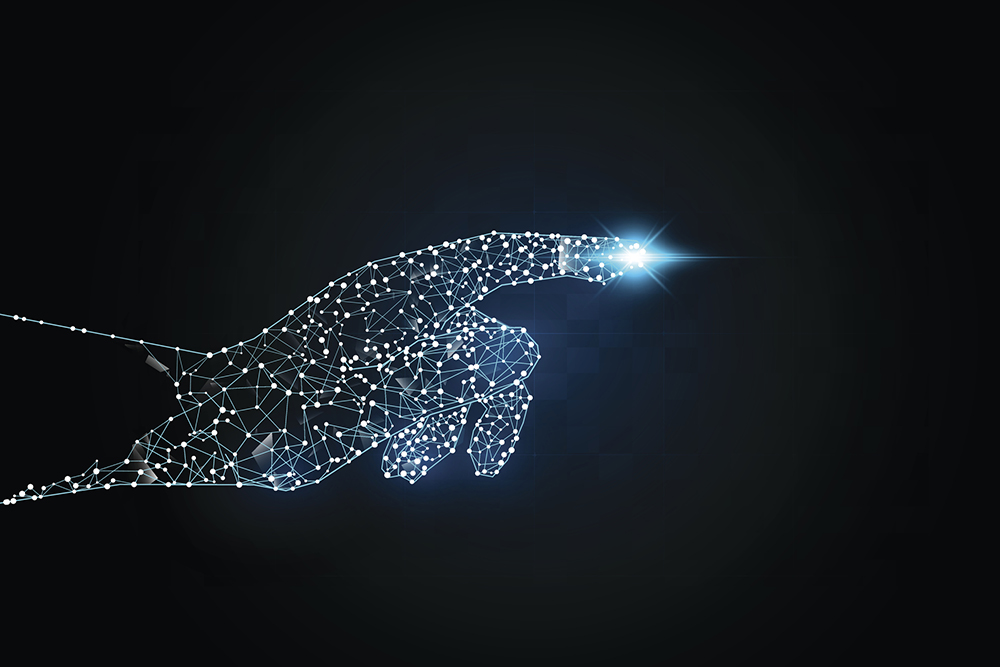Innovations like self-driving vehicles, intelligent virtual assistants, and healthcare robots have fueled both anxiety and optimism about jobs and automation. But actual adoption in recent years hasn’t been the stuff of science fiction: Automation was primarily focused on simple computational tasks (such as credit scoring) and analysis of structured data.
We can’t ignore, however, that artificial intelligence (AI) is propelling automation into new types of work tasks—and at a rapid pace. In our “HR Tech Trends 2020” report, we cover how AI will excel at routine, repetitive tasks. Humans will continue to outperform AI in areas such as complex reasoning, socio-emotional intelligence, and sensory perception.
These differences in ability mean that, over the next decade, HR leaders will need to focus on shaping a workforce in which humans are augmented—not replaced—by AI. For example, as nurses use intelligent systems to manage paperwork, more of their time will be freed up for patient care.
Robots Join the Team: Implications for HR
As AI and robots join more work teams, humans will be required to adapt by gaining new skills or moving into new roles. Two significant trends will emerge in the near future:
- More fields will become quantitative and fact-based. In a Genpact study, senior leaders cited “improved ability to leverage data and analytics” as a top AI benefit. As more organizations adopt AI for its analytics benefits, more workers will be equipped to make data-driven decisions. This does not mean that HR leaders will need to ensure every employee has advanced knowledge of mathematics and statistics, however. Software that comes with prebuilt metrics and analytics best practices can enable nontechnical employees to make better decisions with data.
- HR leaders will become job constructivists. Humans won’t necessarily require advanced knowledge of robot programming or machine learning techniques. AI-driven workplaces will require employees to nurture talents that only humans can possess. HR’s main area of focus will be deconstructing jobs to determine which tasks can be automated, which can be augmented by AI, and where there are gaps that humans need to fill.
AI: Labor Replacement or Labor Enhancement?
Clearly, AI is not an “all or nothing” scenario. (Amazon continued to add people to its workforce, for example, even as it rolled out more than 100,000 robots worldwide.) AI and robots aren’t merely labor replacements; while some roles will be eliminated, new ones will be created.
But still, worker acceptance of AI will be spotty. Automation will impact different populations depending on their educational background, position, role, and age. Salespeople may love that AI will do the grunt work so they don’t have to waste time chasing dead leads, but not everyone will share this enthusiasm. As one truck driver states in this Guardian article, “I’m scared to death of [automation]. I can’t operate a pocket calculator.”
It behooves HR leaders, then, to clearly share a realistic view of how AI will impact employees. At least 2 years in advance of any major AI initiative, communicate which skills will generally increase in demand and which will decline. To do this effectively, follow these tips:
- Connect with other leaders within the organization to determine what your business vision is and how AI will play a role.
- Some organizations will adopt AI simply to improve process efficiencies, while others will adopt it to reinvent the organizations from the ground up. The nature of your organization’s investment will have a significant impact on your hiring, training, and change management activities.
- Implement regular pulse surveys to measure worker attitudes toward automation.
- The results of surveys conducted externally with general worker populations are not likely to reflect real attitudes within your company. By assessing how open people are to retraining or moving into new roles, you will be in a better position to plan ahead and communicate any changes to specific groups.
- Use data-driven career pathing to help employees put growth mind-sets into practice and propel the business forward.
- To get an accurate understanding of how long it typically takes for someone with a nontechnical background to move into a more technical position, for example, determine what the average time is for someone to get into that role. Managers and employees can then use this information to gain a realistic understanding of how much work is involved in acquiring a new skill.
Even though AI will benefit people’s working lives in many ways, it will still undoubtedly pose a major disruption. By understanding where the organization is headed with AI and helping workers adapt, HR can foster acceptance of the newest generation of coworkers: intelligent machines.
Wes Wu is a Human Capital leader and strategist at Visier who transforms organizations for the rapidly changing workforce of the future. He was previously a partner in Ernst & Young (EY) Americas Advisory Services practice. In this role, he helped develop and launch EY’s Future of Work offering and served as market leader to educate and deploy Future of Work strategies for clients. Wu is a much-sought-after industry expert for thought leadership and market knowledge. He earned his Master of Science in Management/Human Resources from Boston University and his Bachelor of Arts in Economics and Asian Studies from Pitzer College in Claremont, California.

